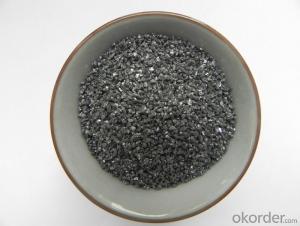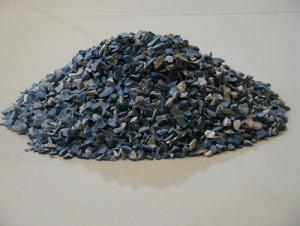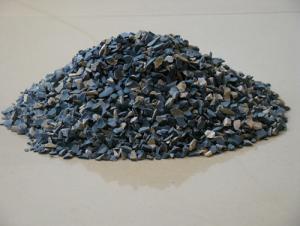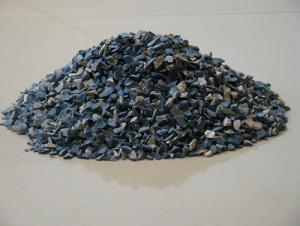Manufacturing Good Quality Silicon Carbide
- Loading Port:
- China main port
- Payment Terms:
- TT OR LC
- Min Order Qty:
- 25 m.t.
- Supply Capability:
- 2000 m.t./month
OKorder Service Pledge
OKorder Financial Service
You Might Also Like
Manufacturing good quality Silicon carbide
Product Description
Description:
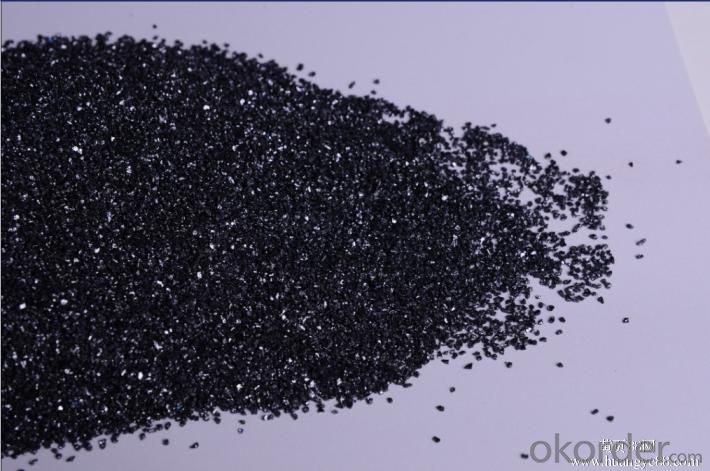
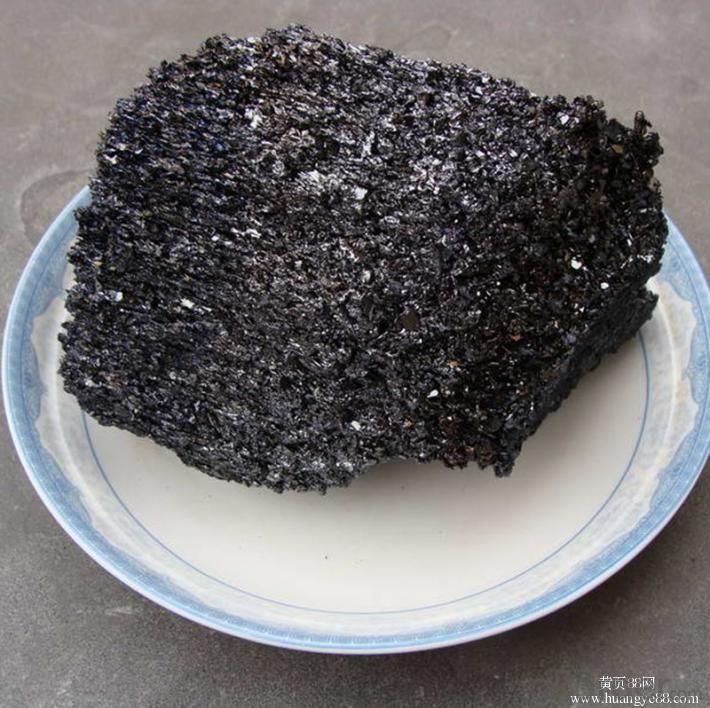
Silicon carbide is made of silica sand, coke, wood and other raw materials by resistance furnace smelting at high temperature. It hassteady chemical composition, anti-abrasion, anti-corrosion, high temperature resistance, good heat conduction and so on. Now SiC produced by China's industry can be divided into black SiC and green SiC.
Use:
They are mainly used in four big application fields: functional ceramics,refractories, abrasives and metallurgical raw materials .
SiC is suitable for cupola and electric furnace.
As deoxidizer, it is widely used in foundry and steel industry. It can rapidly increase the temperature of molten steel, shorten smelting time, at the same time, it also can play deoxidizing, increasing carbon and silicon, heating up role. It can improve the quality of steel.
Characteristics:
1. Increasing carbon and silicon, reducing the consumption of
carburant,ferrosilicon and other alloy, saving the cost of per ton steel.
2. AS SiC is oxidized, it can release a large number of heat energy, reduce the cost of electric, lower the cost of production.
Chemical composition:
Type | Chemical Composition% | |
SiC | F.C | |
≥ | ≤ | |
SiC98.5 | 98.5 | 0.2 |
SiC98 | 98 | 0.3 |
SiC97 | 97 | 0.3 |
SiC95 | 95 | 0.4 |
SiC90 | 90 | 0.6 |
SiC70 | 70 | 3 |
SiC65 | 65 | 5 |
SiC60 | 60 | 10 |
SiC55 | 55 | 10 |
SiC45 | 45 | 12 |
- Q:How to distinguish the fire resistant level of the rubber and plastic thermal insulation material?
- It is divided into level A, B1, B2 and B3. According to the current "burning behavior of building materials classification method", Level A insulation material is a non-combustible material, which belongs to YT. However, from the point of view of the current market , level A insulation material are very few, only glass wool, rock wool board, foam glass and vitrified micro bead. However, compared with level A insulation material, the more welcomed by the market is the organic insulation material. This is characterized as thermal insulation material, which is divided into three levels: level B1 is flame retardant, level B2 is flammable and level B3 is flammable. The level B1 nonflammable thermal insulation material is determined according to the fire endurance of the material. And different parts of the material are divided differently! Such as the common EPS / XPS insulation boards through special treatment of adding flame retardant. . Level B2 combustible insulation material is commonly the EPS expanded polystyrene foam insulation board and XPS board, that is, the ordinary plate. This material has low ignition point, and releases large amounts of harmful gases in the combustion process . Level B3 flammable insulation material is commonly the thermal insulation material taking polystyrene foam as the main material. Since this material is highly flammable, it has been out of the external wall thermal insulation materials. As for the civil construction insulation materials, China's current popular building insulation materials in the market are mainly made of three organic foams: EPS (molded polystyrene board), XPS (extruded polystyrene board) and PU (polyurethane).
- Q:How long is the fire endurance of the rock wool board?
- When the average temperature reaches 140 degrees Celsius or 180 degrees Celsius, it starts to lose the fire insulation function.
- Q:What is neutral refractory? Can refractory suppliers tell the main components of it?
- The material using Al2O3, clay, bauxite and corundum as the main components is neutral material; the material using MgO and CaO as the main components is basic material; the material using SiO2 as th emain component is acidic material.
- Q:What's the material of electrical fire prevention board?
- Industrial electrical fire prevention board is mainly aimed at fire protection and thermal insulation. Iron plate is electrically conductive with good thermal conductivity, which will cause the result that the equipment is not insulated and suffers larger superheating surface! ! ! !
- Q:What is the fire resistance thickness of the thin fire-retardant coatings?
- There is no detailed requirement on the thickness of the thin steelwork fireproof coatings in the "Code for application technology of steelwork fireproof coating", and the thickness there refers to a certain thickness which must(at least) have fire resistance for a certain time. The thickness of fireproof coatings in engineering generally depends on the manufacturer's test reports. Our thin steelwork fireproof coatings: the fire resistance is 2.5 hours, the thickness is 4.9 mm, the fire resistance is 2.0 hours, the thickness is 3.5 mm, the fire resistance is 1.5 hours, the thickness is 1.75 mm, the fire resistance is 1.0 hours, the thickness is 1.17 mm.
- Q:What kind of material is refractory bauxite?
- Refractory bauxite, also known as bauxite alumina or bauxite with high alumina, is the main raw material for the production of high alumina (aluminum content ≥48%, belongs to LAS) refractory.
- Q:How long is the duration of fire resistance that fireproof window of level B can endure?
- Level B refers to the fire resistance rating and different hours in fireproofing of the fireproof window. Fireproof window of level A can endure fire for 1.5 hours while level B, 1.2 hours
- Q:Who can introduce the external wall thermal insulation materials fire rating regulations?
- 1. The thermal insulation material of level A combustion performance: Rock wool, glass wool, foam glass, foamed ceramics, foam cement, hole-closed perlite, etc. 2. combustion performance is level B1 insulation materials: Extruded polystyrene board (XPS) after special treatment / Special treatment of polyurethane (PU), phenolic aldehyde and gelatine powder polyphenyl granule 3 combustion performance is level B2 insulation material: Molding polystyrene board (EPS), extruded polystyrene board (XPS), polyurethane (PU), polyethylene (PE), etc. See the 2009 edition construction technical measures 4.3.6 Level A insulation material is only for fireproofing, but its thermal insulation performance is not better than organic XPS \\ EPS and other materials. I feel the best insulation materials should be modified phenolic board, which can keep insulation and fireproofing, but the unit price is very expensive. Insulation materials in the domestic market have some disadvantages, it is better to considere the materials within the acceptable range in the building needs.
- Q:How is the performance of refractory materials?
- It is a little difficult to answer. There are some requirement for refractory materials, such as fire resistance, softness, creep, thermal shock, abrasive resistance. Besides, requirements for construction performance include: Liquidity, plasticity and other linear change rate, volume density, strength (including high temperature) and all other important indicators must be tested the same conditions with the use of test conditions and test items like body density, strength, line changes in the basic project
- Q:Who knows the new fireproof and thermal inuslation matertial?
- Ceramic foam insulation board, XTP vacuum insulation panels and a variety of composite insulation panels, etc. Relatively speaking, the inorganic insulation board is a trend. In terms of the overall performance, the cost performance of the foam insulation board is higher. XTP has the best performance, but with a little trouble in construction. Because of the vacuum characteristics, transportation and installation process should be very careful.
1. Manufacturer Overview |
|
|---|---|
| Location | |
| Year Established | |
| Annual Output Value | |
| Main Markets | |
| Company Certifications | |
2. Manufacturer Certificates |
|
|---|---|
| a) Certification Name | |
| Range | |
| Reference | |
| Validity Period | |
3. Manufacturer Capability |
|
|---|---|
| a)Trade Capacity | |
| Nearest Port | |
| Export Percentage | |
| No.of Employees in Trade Department | |
| Language Spoken: | |
| b)Factory Information | |
| Factory Size: | |
| No. of Production Lines | |
| Contract Manufacturing | |
| Product Price Range | |
Send your message to us
Manufacturing Good Quality Silicon Carbide
- Loading Port:
- China main port
- Payment Terms:
- TT OR LC
- Min Order Qty:
- 25 m.t.
- Supply Capability:
- 2000 m.t./month
OKorder Service Pledge
OKorder Financial Service
Similar products
New products
Hot products
Related keywords
